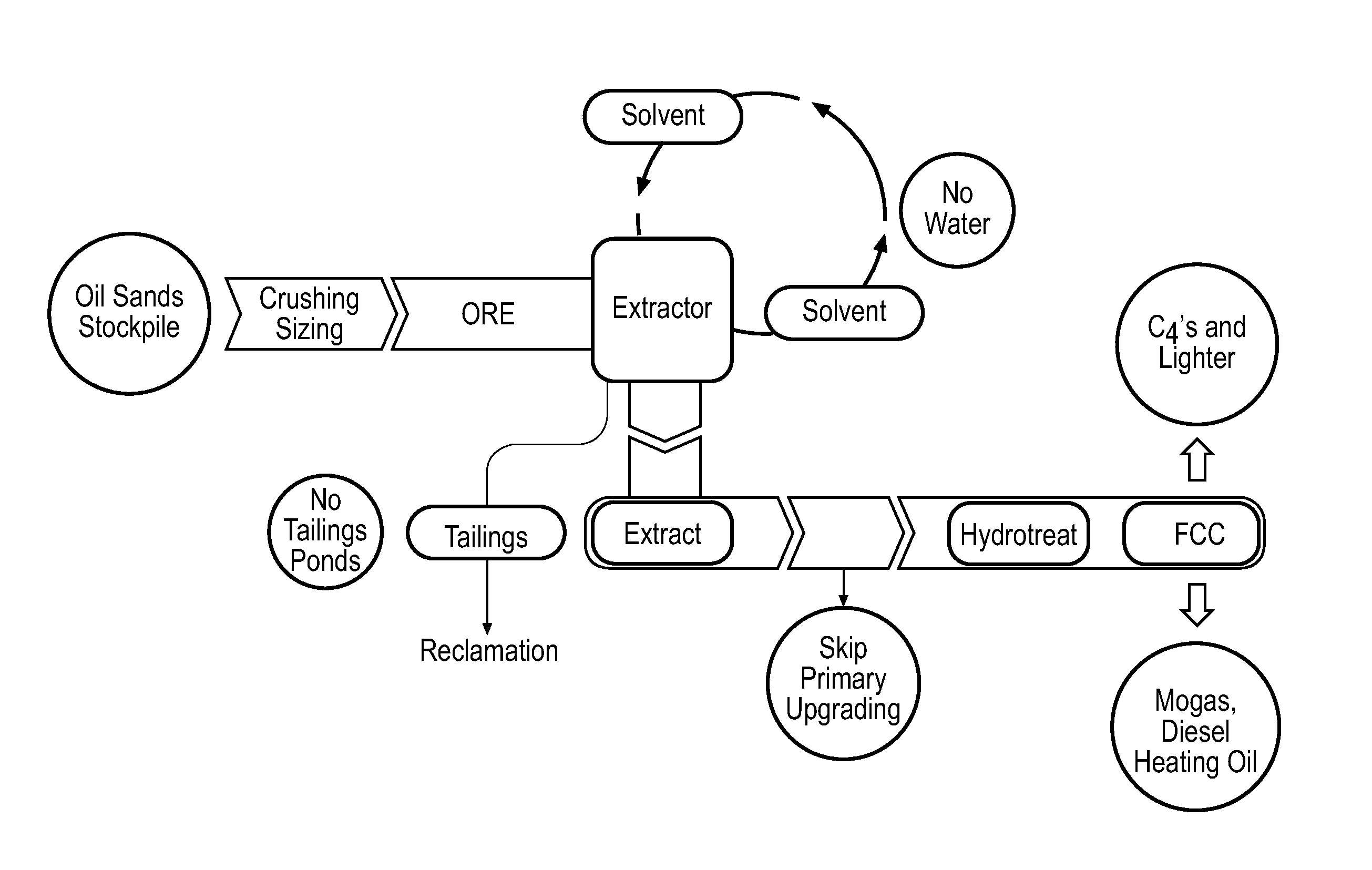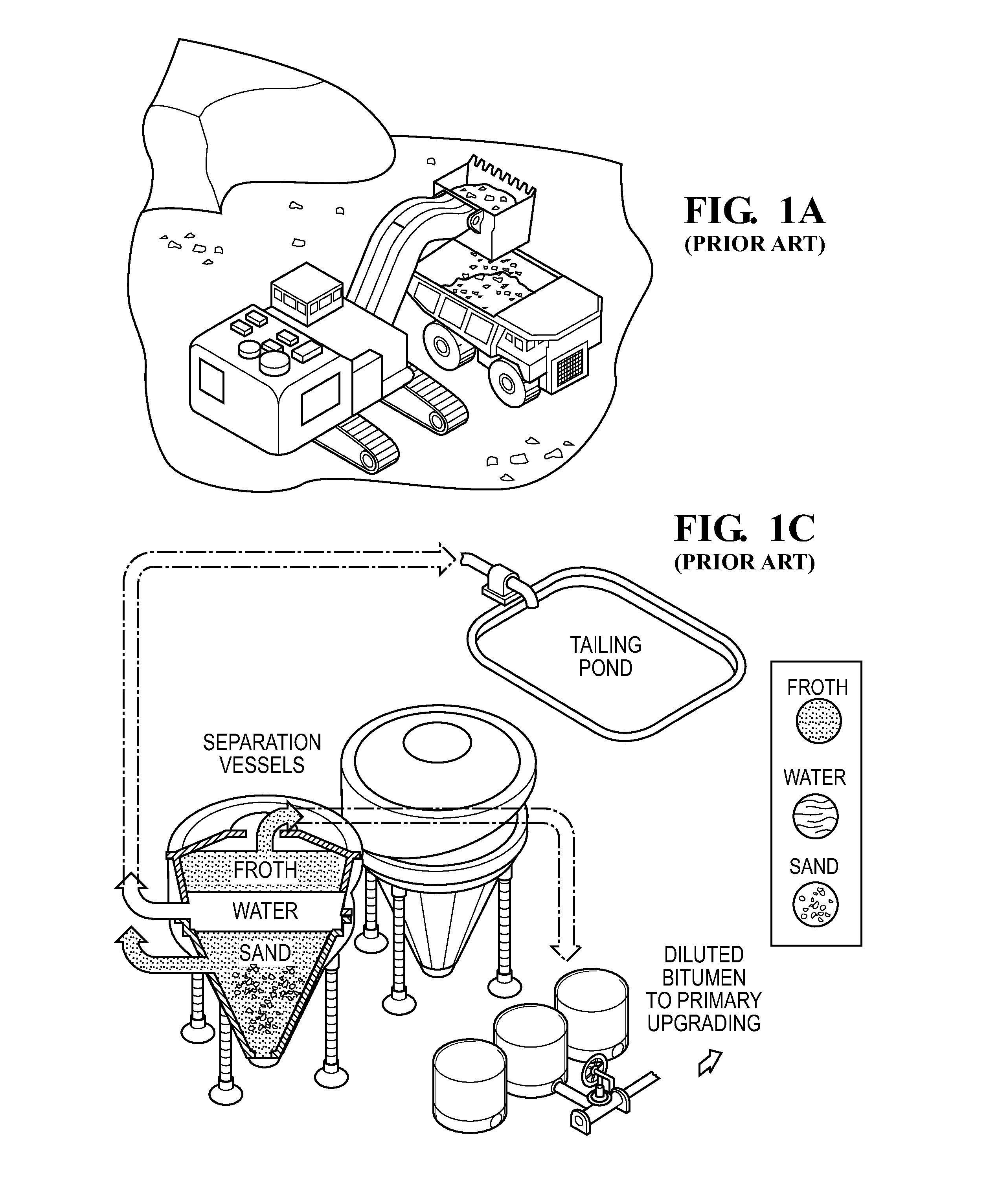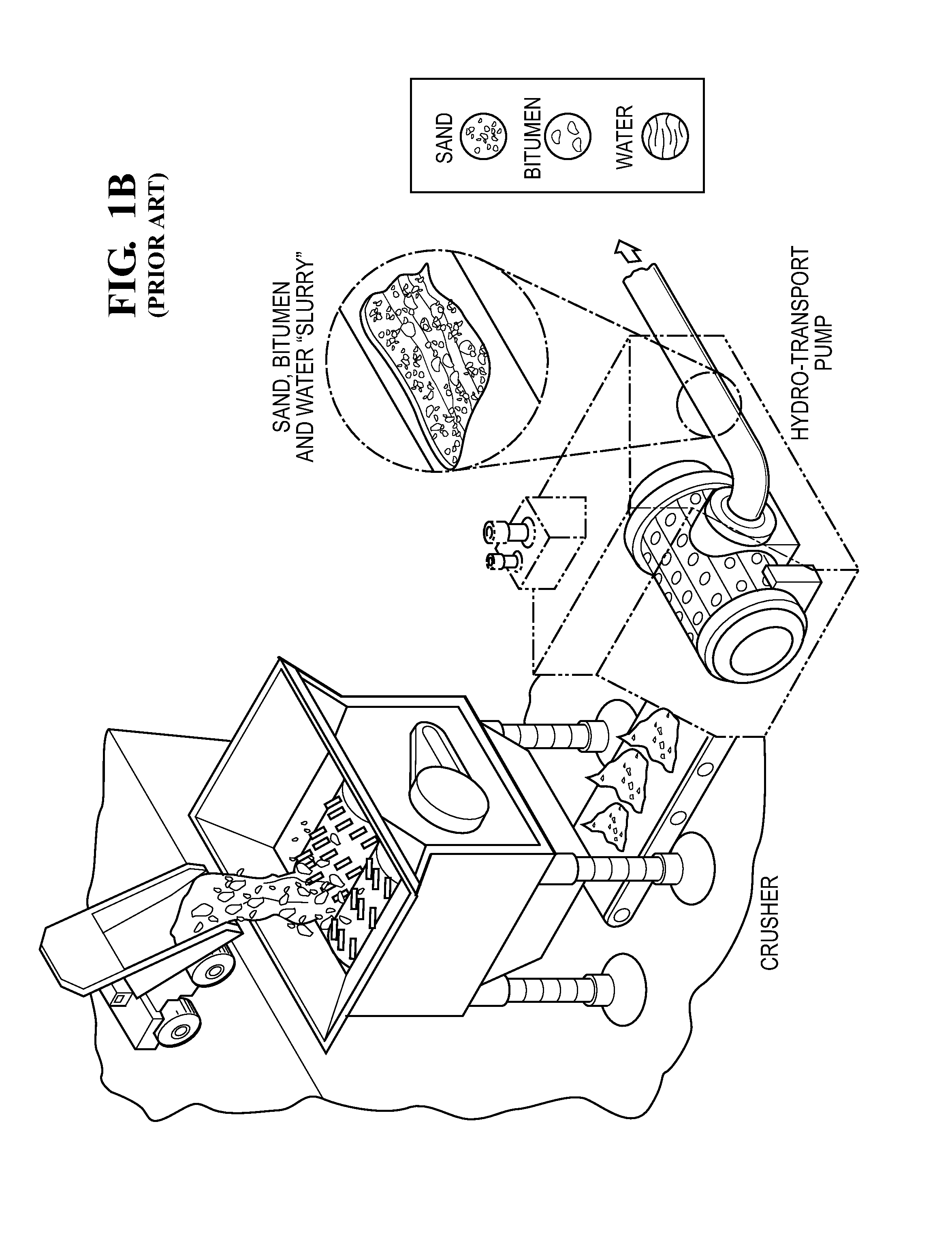Process for producing transportation fuels from oil sands-derived crude
- Summary
- Abstract
- Description
- Claims
- Application Information
AI Technical Summary
Benefits of technology
Problems solved by technology
Method used
Image
Examples
example 1
Comparative
[0124]A comparative example can be found at the website of Canadian Natural Resources Limited (CNRL): http: / / webadmin.cnrl.com / upload / media_element / 535 / 01 / the-oil-sands-process.pdf. This comparative example is shown in FIGS. 1A-1E. As shown in FIG. 1A, bitumen—a thick, sticky crude oil like cold molasses—is mined from Canadian oil sands using open pit mining. Mining shovels dig up the oil-rich sands and load it into huge trucks, which then transport the oil sands to crushers to begin the extraction process.
[0125]During extraction (FIG. 1B), the oil sands material (i.e., ore) is crushed into small pieces, filtered and mixed in a hot water process, which is based on the original Clark hot water process, originally patented by Dr. Karl Clark in 1929. A slurry produced in the hot water process is transported via pipeline to the bitumen (i.e., tar) extraction plant.
[0126]In a separation vessel (FIG. 1C), the slurry goes through a frothing process. The sand and water separate a...
example 2
[0129]FIG. 2 is a schematic of an example selective extraction process according to this invention. The mined oil sands is contacted with a light solvent, such as a propane-based solvent, under relatively mild temperature and pressure conditions. A high quality deasphalted crude oil is selectively removed or extracted from the extractor. The extract or crude oil is extremely low in asphaltene and metals content, and referred to as a deasphalted crude oil.
[0130]Producing a deasphalted crude oil that is low in asphaltene and metals content means that fewer refining steps are needed to convert the deasphalted crude oil to high quality jet fuel, diesel and gasoline compared to the Synthetic Crude Oil (SCO) currently produced from Canadian oil sands. The deasphalted oil is particularly suited as feedstock for a catalytic cracking process. The deasphalted oil can be optionally hydrotreated under mild conditions to reduce total acid number or partially saturate the deasphalted oil.
[0131]Fe...
example 3
[0132]Samples of oil sands ore were crushed and fed to an extraction chamber. The crushed ore was moved through the extraction chamber, while being contacted with propane solvent. The extraction chamber consisted of an auger type moving device in which the auger was used to move the particles through the chamber, and solvent was injected into the extraction chamber as the particles moved through the extraction chamber. An example of the device is depicted in U.S. Pat. No. 7,384,557.
[0133]Multiple runs were carried out using different types of oil sands ore, including oil sands ore obtained from oil sands leases in Canada, Utah and Kentucky. Following extraction of the crude oil from the ore, a mixture of the crude oil and solvent was collected. The solvent was separated from the crude oil by flash evaporation.
[0134]The separated crude oils were analyzed. Analytical results are provided in the following Table 13.
TABLE 13CrudeCrudeCrudefromfromCrudefromCanadianCanadianfromKentuckyCHAR...
PUM
 Login to View More
Login to View More Abstract
Description
Claims
Application Information
 Login to View More
Login to View More - R&D
- Intellectual Property
- Life Sciences
- Materials
- Tech Scout
- Unparalleled Data Quality
- Higher Quality Content
- 60% Fewer Hallucinations
Browse by: Latest US Patents, China's latest patents, Technical Efficacy Thesaurus, Application Domain, Technology Topic, Popular Technical Reports.
© 2025 PatSnap. All rights reserved.Legal|Privacy policy|Modern Slavery Act Transparency Statement|Sitemap|About US| Contact US: help@patsnap.com



